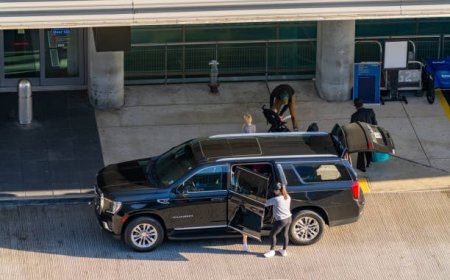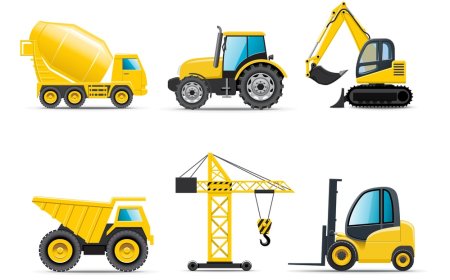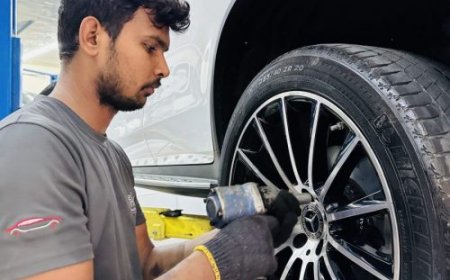The Archaeology of Automotive Ruins: Discovering Stories in the Scrap
Explore the hidden stories behind abandoned vehicles and the role they play in history. Understand how this connects with services like Cash for Buses Townsville.

Scattered across rural fields, backyards, and ageing storage lots across Australia are collections of abandoned vehicles. These are not just old machinesthey are records of time, culture, and purpose. Every broken-down car or bus left in the open holds a story about people, travel, and how society has changed. This is the world of automotive ruins. It may not be part of a formal museum, but it holds just as much historical value.
The study of these ruins is not unlike archaeology. Instead of ancient tools or bones, it involves steering wheels, seatbelts, and faded licence plates. This blog takes a closer look at how these machines, even while rusting away, reveal stories of past decades.https://www.cash4carstownsville.com.au/
What Are Automotive Ruins?
Automotive ruins refer to cars, trucks, buses, and other vehicles that have been left unused for many years. These can be found in private junkyards, on farms, in public paddocks, or deep in bushland. Some have been exposed to decades of weather, while others remain partially sheltered in old garages.
Over time, their exteriors fade, their tyres go flat, and nature begins to reclaim them. Moss grows on dashboards. Trees grow through engine bays. These sights are often overlooked, but they mark real points in transport history.
Vehicles as Historical Markers
A single vehicle model can say much about its era. In the 1950s, Australians embraced large family sedans, often with chrome finishes and wide grilles. By the 1980s, smaller cars began to appear more frequently, influenced by overseas markets and fuel concerns. Today, many of these older vehicles have vanished from roads but can still be found in ruins across the country.
Some ruins belong to military vehicles, work trucks, or long-distance buses. These types show how people moved goods, travelled to work, or connected with distant towns. The condition of each vehicle reveals how it was used. Burn marks, heavy rust, or missing parts tell a clear story.
Stories Found in the Details
It is not just the body of the car that holds meaning. Inside, there can be personal cluesold parking stickers, faded maps in glove boxes, or hand-written notes. Some ruins still have toys under seats or name tags on dashboards. These small items show that behind every car or bus was a person or a group of people who used it every day.
A school bus abandoned on a rural property may still have names scratched into the seatbacks. A tradesmans ute might carry old tools, still rusting in the tray. These elements are part of our shared memory and are just as valuable as any written history.
Environmental and Social Impact
While they may carry historical value, automotive ruins can also cause problems. Many old vehicles still contain harmful materialssuch as engine oil, battery acid, and rusting metals. If left unmanaged, these can leak into the soil or waterways.
In areas where dozens or even hundreds of old vehicles are left in one spot, the risk becomes more serious. Proper care, including draining fluids and recycling parts, is essential. Without this, what once served the community can end up damaging the land.
From Scrap to Resource
Although many of these vehicles can no longer be restored, they still hold materials that are useful. Steel, aluminium, rubber, and copper can be recovered. These materials reduce the demand for new mining and help support the recycling industry.
Recycling also reduces pressure on landfill sites. Rather than taking up space and leaking chemicals, these old machines can be stripped down and reused in building materials, manufacturing, or even art installations.
When Old Buses and Cars Need to Move On
At times, property owners find themselves with more vehicles than they can manage. Clearing them out is often necessary, but it should be done in a way that respects both the environment and the historical weight of each vehicle. When asking how to manage that, many begin to search for help related to Cash for Buses Townsville. This option can provide a way to responsibly remove larger vehicles like buses while also recycling their parts.
These services work with yards and recyclers that understand how to handle buses properly, making sure nothing harmful ends up in the ground. It also gives those vehicles a final use, instead of allowing them to rot in a field. Whether it is one bus or several, the process helps free up land while keeping old materials in circulation.
Looking at Scrap Through a Different Lens
People often walk past rusted vehicles without a second thought. But for some, they hold deep meaning. Photographers, historians, and restoration enthusiasts see these ruins as a record of changing design, technology, and lifestyle. Some even go out of their way to document these vehicles before they disappear forever.
Across Australia, social media pages now share photos of these finds. Each image draws attention to what might otherwise be forgotten. Whether it is an old Bedford bus in the bush or a Holden left behind a shed, each vehicle speaks of its time.
Final Thoughts
Automotive ruins are more than worn-out shells. They are remains of a world that once moved, carried, transported, and connected people across vast spaces. Every car or bus now sitting silent was once full of life and purpose.
Looking at these ruins helps us reflect on the past and think about how we treat machines when they reach the end of their road. With thoughtful steps, old vehicles can still serve againwhether through parts, memory, or material reuse.



























